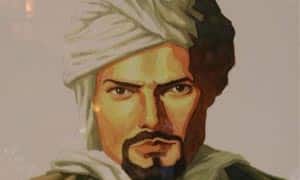Ibn Battuta: Celebrated Traveler
Ibn Battuta, a celebrated traveler, was born in Tangier, Morocco. He lived from 1304 to 1368/1369 and is renowned for his travelogue, Rihla, which simply means Travels. It recounts his many journeys throughout the Muslim world as well as far-flung regions like Russia, China and Constantinople. Along the way, he encountered many adventures and dangers which are also recorded in Rihla.
According to 1001 Inventions: Muslim Heritage in Our World, Ibn Battuta “went to the corners of the Muslim world by walking, riding and sailing over seventy-five thousand miles, through over forty modern countries, and many know him as the Muslim Marco Polo.” His travels afforded him many opportunities for learning in the great Islamic cities he visited, along with understanding the world of 14th century Eurasia.
The Quran encourages people to travel throughout the earth and to see the signs of God everywhere: “And among His Signs is the creation of the heavens and the earth, and the variations in your languages and your colors: verily in that are Signs for those who know.” (30: 22) In addition, a famous prophetic tradition encourages Muslims to go in search of knowledge as far as China. [Click here to learn about Islam in China.]
Ibn Battuta: Uniting Spirituality and Adventure
Surely, Ibn Battuta, with his sound theological grounding, was inspired by such open invitations – opportunities which enabled him to unite the spiritual and adventurous aspects of his personality. Indeed, he began his lifelong voyage with a religious purpose: to complete one of the pillars of Islam, the obligatory pilgrimage to Mecca, known as hajj. However, he extended this trip to surrounding areas, returning again and again to Mecca as his focal point.
In 1325, at the age of 21, Ibn Battuta, a theologian, poet and scholar, left his hometown to undertake the journey of hajj. Little had he realized at the time that he wouldn’t return home for another 24 years. Traveling by land, he made stopovers at Cairo, Jerusalem, and Damascus before he reached Mecca.
After completing Hajj, he proceeded up north to the area presently known as Iraq and Iran, moving onto Turkey. Then, he returned for another Hajj, and this time stayed for a period in Mecca. Afterwards, he proceeded down to the Swahili coast and visited Somalia and Tanzania, returning to Mecca via Oman for another Hajj. [Read more: Hajj, the journey of a lifetime]
This time, he traveled to the heart of Asia, as far as Astrakhan in Russia onwards to Bukhara and Samarkand, then to Afghanistan, crossing into India. He served the Indian Sultan for eight years as a Judge before moving on. Stopping in Maldives, Indonesia, Vietnam, Philippines, among other places, he finally arrived in China, a long-held dream.
Ibn Battuta: Back at Home
He began his return journey to Morocco in 1346 via Damascus and Mecca. He reached Tangier in 1349; his father had died more than 15 years ago and his mother, a few months before he came home. Shortly thereafter, he went to Muslim Spain and then traveled through the Sahara Desert and visited Timbuktu. He returned to Tangier in 1354.
At the insistence of the Moroccan Sultan, Ibn Battuta dictated an account of his travels to a scholar whom he had met earlier in Granada; this became the Rihla which was later translated for a wider audience. For the rest of his life, he served as a judge in Morocco.
Thanks to his journeys and recorded descriptions, we learn much about the medieval world, such as the production centers of trade staples in major cities, the prevalent technique used for pearl-diving in the Persian Gulf, creative courier service methods in India along with detailed accounts of contemporary cities and trading routes.
Ibn Battuta’s travels have long fascinated the world, with books and detailed profiles devoted to him. Most recently, his life has been depicted in an IMAX documentary titled Journey to Mecca.
Indeed, Ibn Battuta’s voyage enriched his own life and enabled him to appreciate the diverse signs of God in the form of people and places. By recording his experiences, he has enhanced our knowledge of that era as well.








